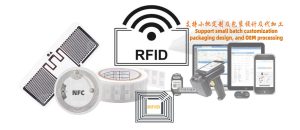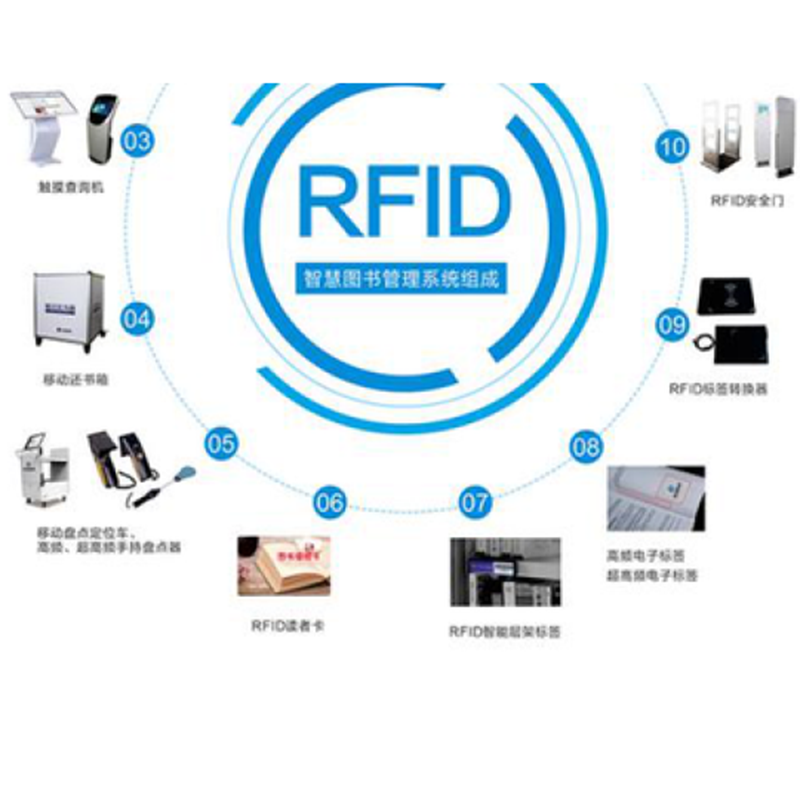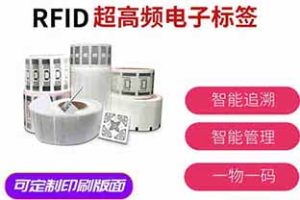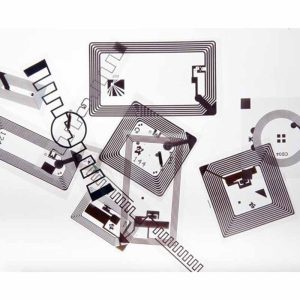What are the RFID devices of RFID electronic tag manufacturers?
RFID devices are designed based on RFID technology and can be divided into read-write modules, antennas, read-write devices, and electronic tags according to their composition. Electronic tags record the required item information, while read-write devices are responsible for identifying and modifying the content recorded on electronic tags. RFID devices are widely used in asset management, warehousing and logistics management, industrial manufacturing, vehicle recognition, animal recognition, and many other fields.

1. RFID reader, also known as RFID reader, automatically identifies target objects and obtains relevant data through radio frequency identification signals. It is divided into low frequency, high frequency, ultra-high frequency, etc. according to working frequency; According to the structural form, it can be divided into split type and integrated type. Split type refers to having only read-write components inside and no antenna installed, and the antenna needs to be externally connected for use. Integrated type refers to having an antenna installed inside the reader, which can directly achieve label reading and writing. External antennas can also be added as needed to increase its reading and writing range; Classified by product form, it can be fixed, handheld, etc; According to functional purposes, it can be divided into animal chip code readers, industrial readers, AGV landmark sensors, vehicle long-distance readers, etc; RFID readers are widely used in various fields such as asset management, warehouse management, industrial identification, vehicle identification, and animal identification.
What are the RFID devices of RFID electronic tag manufacturers?
2. RFID antenna is the main component of RFID reader to achieve communication induction, which can be divided into two categories: RFID electronic tag antenna and reader antenna, respectively responsible for receiving energy and transmitting energy. Antennas can convert guided wave energy from transmitters into radio waves, or convert radio waves into guided wave energy. The polarization methods of antennas include wired polarization and circular polarization.
3. The main function of RFID electronic tags is to store information data of items, with a variety of types and forms of tags. The products cover low frequency, high frequency, ultra-high frequency, etc. According to the different packaging materials, they are divided into paper stickers, fabrics, ABS, ceramics, PCB, PVC, PET, etc; According to different packaging forms, it can be divided into card type, implantable type, buckle type, zip tie, etc; According to different functions, there are flexible anti metal asset labels, clothing and linen washing labels, illuminated and found labels, turnover box/pallet labels, car windshield labels, electronic ear labels for cattle and sheep, library labels, production line high-temperature resistant labels, etc. Different types of electronic tags are applied in different scenarios, and in some scenarios, multiple types of tags need to be used together. RFID tags are widely used in many fields such as warehousing and logistics, asset management, industrial manufacturing, vehicle recognition, smart healthcare, and animal management.
What are the RFID devices of RFID electronic tag manufacturers?
4. RFID printers require the use of RFID printers to print RFID electronic tags. RFID printers mainly support two operating frequency bands: high frequency (13.56MHz) and ultra-high frequency (860-960MHz). They can code and write for self-adhesive RFID tags and flexible metal resistant electronic tags. The innovative antenna design of “print first, read and write later” achieves a 100% label detection rate, allowing no defective electronic tag to flow into the application process.
We have strong research and development capabilities and are a trusted manufacturer. Welcome to call or sales@molddl.com For consultation, please contact us for free samples! Our company supports small batch customization, packaging design, and OEM processing






